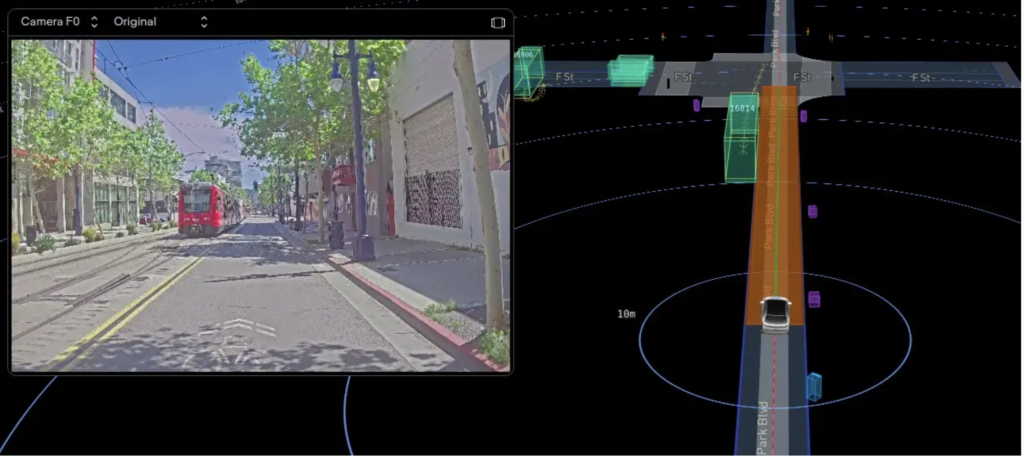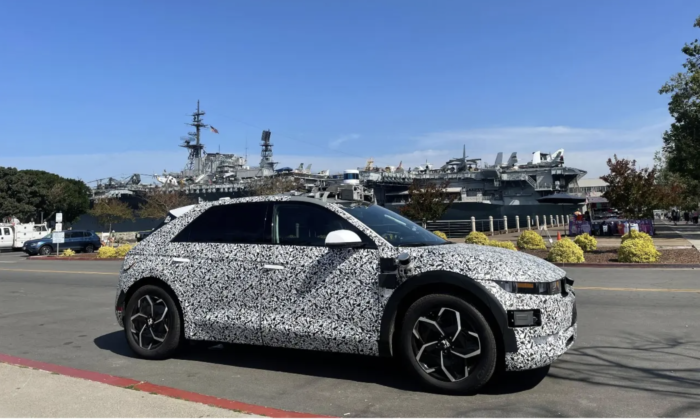Motional has expanded its robotaxi testing regime to the streets of San Diego, California. Unlike the relatively flat surface of Las Vegas, Nevada, where Motional has been operating a robotaxi service for the last four years, San Diego features a series of foothills and valleys that run out from a nearby mountain range down toward the ocean. As a result, Motional’s purpose-built Hyundai Ioniq 5 test vehicle has been exposed to a series of quick elevation changes caused by going up and over the crest of hills.
There are also the bright red streetcars of the city’s iconic Trolley (light rail) service, with miles of tracks throughout the city. Despite being accustomed to driving alongside a range of vehicles – from sedans to sports cars, box trucks to flatbeds, buses to bicycles – the street-level tram represented a new challenge for Motional’s robotaxi. However, the Motional testing team report that the vehicle’s suite of more than 30 sensors – a combination of cameras, radars and lidar – has been able to detect the trolley, classify it correctly, understand how it was moving and navigate around it safely.
“Motional engineers considered the AV’s initial encounters with the Trolley a success, as the vehicle was able to reason through this initial, unfamiliar encounter and handle it appropriately and safely,” said a blog post on the company’s website. “Motional robotaxis can be found taking test drives in multiple cities in the US or in Asia, including Boston, Pittsburgh, Las Vegas, Santa Monica and Singapore. That’s in addition to cities like San Diego, where Motional vehicles have spent time on the road evaluating system performance.”
The company says such a diversity of driving environments means its robotaxis will start with a broad foundation of experience, and be able to adapt to new surroundings quickly. “If this seems like an odd assortment of domestic and international cities, that’s the point. Each city is different, with its own unique traffic patterns, climate, infrastructure and even driving habits.”



